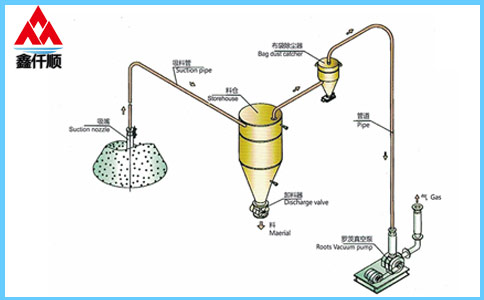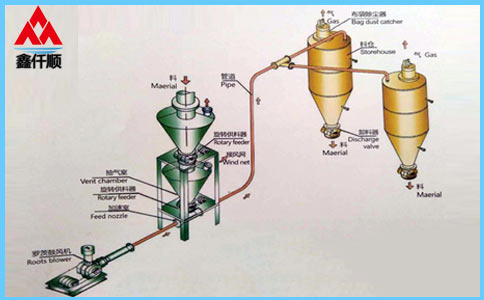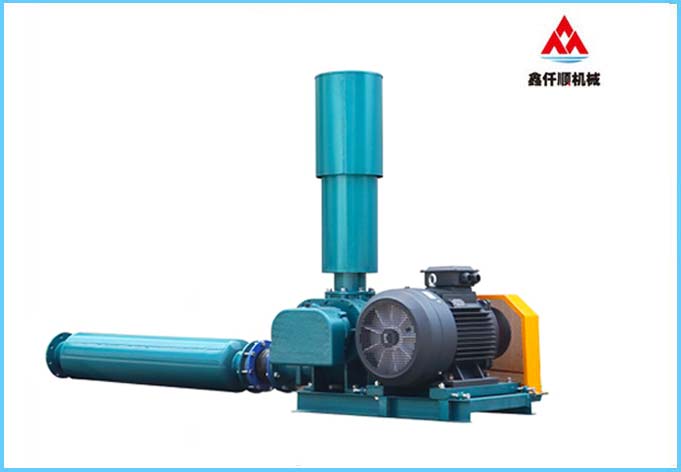The working environment and conveying medium of Roots blower are two main reasons for corrosion. Therefore, Roots blower should not be installed in an environment with high air humidity; Secondly, for the medium with strong corrosivity, it is necessary to communicate with the manufacturer in advance to select the Roots blower with appropriate material.
Method for removing rust from the exterior of Roots blower: First, we need to protect the exterior structure of the blower, including the paint on the exterior of the casing. If the paint falls off due to external reasons, spot spraying can be carried out to cut off the contact between the Roots blower body and the outside air. Secondly, the internal rust removal can only be carried out by disassembling the roots blower, and then the rust removal of the rusted parts. Because the internal rust will affect the normal operation of the roots blower, if the rust is serious, it should be treated in time to avoid excessive wear during the treatment, so as not to affect the mechanical accuracy of the roots blower.
First of all, the roots blower must be vented after use. Because Roots blower has forced exhaust. If the Roots blower is not vented, or the vent valve is only opened a little, it will lead to too much air intake and insufficient air output, and the gas will be compressed in the pipe between the blower rotor cavity, the blower outlet and the valve. More and more compressed gases are bound to cause safety accidents.
The surrounding working environment of Roots blower and the medium transported by Roots blower are the two main aspects that cause corrosion. When installing Roots blower, it should not be installed in the environment with high air humidity. Secondly, we should communicate with the manufacturer when purchasing the medium transported, and communicate with the manufacturer for the medium with strong corrosivity, Select the Roots blower with proper material.
For rust removal of parts, polish them, and then spray some butter to cut off the contact area between air and parts. If there is serious rust, replace them properly, and then apply butter.
For some internal corrosion, it may also be caused by corrosive gas. For this kind of corrosion, we can remove the inlet silencer after the Roots blower has been used for a period of time, and observe the impeller through the connection hole between the casing and the inlet silencer. If there is serious corrosion, we can carry out overhaul and spray anti-corrosion materials.
1. External rust removal. Protect the external structure of the fan, including the paint outside the casing. If the paint falls off due to external reasons, spot spraying can be carried out.
2. Internal rust removal. If the roots blower is rusted inside, it can only be disassembled, and then the rusted parts can be derusted. In case of serious corrosion, timely treatment shall be carried out to avoid affecting the mechanical accuracy of Roots blower.
3. For the internal corrosion caused by corrosive gas, we can remove the inlet silencer after the Roots blower has been used for a period of time, observe the impeller through the connection hole between the casing and the inlet silencer, and if there is serious corrosion, overhaul it and spray anti-corrosion materials.
4. Rust removal of parts. The rusted parts of Roots blower can be polished and then sprayed with some butter. If the corrosion is serious, replace the parts first, and then apply grease.
I believe that after reading the above content, you should also have a better understanding of the tips of Roots blower for anti-corrosion and embroidery. I hope it will help you.
Text label: Roots blower
Link to this article: //wuhanzhcs.com/html/news/n02/610.html
The working environment and conveying medium of Roots blower are two main reasons for corrosion. Therefore, Roots blower should not be installed in an environment with high air humidity; Secondly, for the medium with strong corrosivity, it is necessary to communicate with the manufacturer in advance to select the Roots blower with appropriate material.
Method for removing rust from the exterior of Roots blower: First, we need to protect the exterior structure of the blower, including the paint on the exterior of the casing. If the paint falls off due to external reasons, spot spraying can be carried out to cut off the contact between the Roots blower body and the outside air. Secondly, the internal rust removal can only be carried out by disassembling the roots blower, and then the rust removal of the rusted parts. Because the internal rust will affect the normal operation of the roots blower, if the rust is serious, it should be treated in time to avoid excessive wear during the treatment, so as not to affect the mechanical accuracy of the roots blower.
First of all, the roots blower must be vented after use. Because Roots blower has forced exhaust. If the Roots blower is not vented, or the vent valve is only opened a little, it will lead to too much air intake and insufficient air output, and the gas will be compressed in the pipe between the blower rotor cavity, the blower outlet and the valve. More and more compressed gases are bound to cause safety accidents.
The surrounding working environment of Roots blower and the medium transported by Roots blower are the two main aspects that cause corrosion. When installing Roots blower, it should not be installed in the environment with high air humidity. Secondly, we should communicate with the manufacturer when purchasing the medium transported, and communicate with the manufacturer for the medium with strong corrosivity, Select the Roots blower with proper material.
For rust removal of parts, polish them, and then spray some butter to cut off the contact area between air and parts. If there is serious rust, replace them properly, and then apply butter.
For some internal corrosion, it may also be caused by corrosive gas. For this kind of corrosion, we can remove the inlet silencer after the Roots blower has been used for a period of time, and observe the impeller through the connection hole between the casing and the inlet silencer. If there is serious corrosion, we can carry out overhaul and spray anti-corrosion materials.
1. External rust removal. Protect the external structure of the fan, including the paint outside the casing. If the paint falls off due to external reasons, spot spraying can be carried out.
2. Internal rust removal. If the roots blower is rusted inside, it can only be disassembled, and then the rusted parts can be derusted. In case of serious corrosion, timely treatment shall be carried out to avoid affecting the mechanical accuracy of Roots blower.
3. For the internal corrosion caused by corrosive gas, we can remove the inlet silencer after the Roots blower has been used for a period of time, observe the impeller through the connection hole between the casing and the inlet silencer, and if there is serious corrosion, overhaul it and spray anti-corrosion materials.
4. Rust removal of parts. The rusted parts of Roots blower can be polished and then sprayed with some butter. If the corrosion is serious, replace the parts first, and then apply grease.
I believe that after reading the above content, you should also have a better understanding of the tips of Roots blower for anti-corrosion and embroidery. I hope it will help you.
Text label: Roots blower
Link to this article: //wuhanzhcs.com/html/news/n02/610.html











